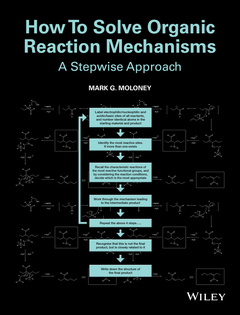Description
How To Solve Organic Reaction Mechanisms
A Stepwise Approach
Author: Moloney Mark G.
Language: English
Subject for How To Solve Organic Reaction Mechanisms:
256 p. · 21.1x27.7 cm · Paperback
Description
/li>Contents
/li>Biography
/li>
How To Solve Organic Reaction Mechanisms: A Stepwise Approach is an upgraded and much-expanded sequel to the bestselling text Reaction Mechanisms at a Glance. This book takes a unique approach to show that a general problem-solving strategy is applicable to many of the common reactions of organic chemistry, demonstrating that logical and stepwise reasoning, in combination with a good understanding of the fundamentals, is a powerful tool to apply to the solution of problems.
Sub-divided by functional group, the book uses a check-list approach to problem-solving using mechanistic organic chemistry as its basis. Each mechanistic problem is presented as a two-page spread; the left-hand page introduces the problem and provides a stepwise procedure for working through the reaction mechanisms, with helpful hints about the underlying chemistry. The right-hand page contains the full worked solution and summary.
This revised edition includes the following updates:
- A new chapter which applies the problem solving strategy to ligand coupling reactions using transition metals
- Much-expanded set of fully worked problems
- Over 40 further problems (with answers for tutors) for use in tutorials
How To Solve Organic Reaction Mechanisms: A Stepwise Approach is an essential workbook for all students studying organic chemistry, and a useful aide for teachers of undergraduate organic chemistry to use in their tutorials.
Preface vi
Abbreviations vii
About the companion website viii
Introduction ix
1 Nucleophilic substitution and elimination 1
2 Alkene and alkyne chemistry 32
3 Nucleophilic additions to carbonyl groups 64
4 Enolate chemistry 96
5 Aromatic chemistry 128
6 Rearrangements 160
7 Ligand coupling processes 192
Index 224
Professor Mark Moloney, Department of Chemistry, University of Oxford, Chemistry Research Laboratory, Oxford, UK.




